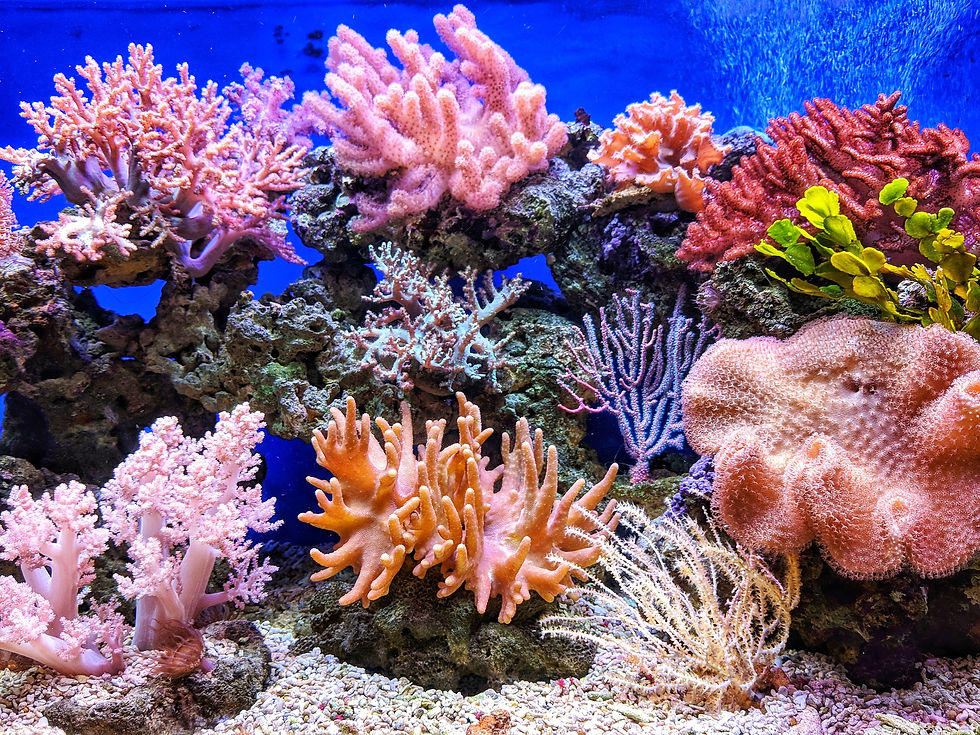Fashion’s Affect on Our Fragile Oceans
- Charlotte Carlile

- Jun 1, 2021
- 3 min read
Updated: Aug 13, 2021
The fashion industry is affecting our oceans:
Currently, the way the fashion’s industries run affects our environment, especially our oceans. This shouldn’t come as a surprise to those of us who try to be environmentally aware, and particularly those of us that try to consume fashion ethically. Despite knowing that fashion affects our Earth, we might not know exactly how it happens.
Microfibres are tiny fibres in our clothes, made of plastic. These shed when we wash them, and end up in our oceans. They exist in synthetic textiles, with the highest number being in polyester fabrics. The production of clothes uses non-renewable resources, such as fossil fuels, creating pollution, and damaging the planet. Producing and dyeing clothes use toxic chemicals, creating wastewater which harms both humans and animals.
The use of fast fashion as an economic model means that trends cycle through much more quickly than they used to. This means that the field of fashion makes a lot of waste, with people throwing clothes away more often despite wearing them less. This means that fashion’s industries have a large carbon footprint and contribute in many different ways to the damage that’s happening to our planet.
Fashion’s environmental damage:
Microfibres that end up in our ocean can harm the ocean wildlife, and can also affect humans directly. This happens when they become ingrained into our food chain
“Already, plastic waste is disrupting marine food webs and affecting species. It is found in the guts of more than 90% of seabirds, the stomachs of over half of the world’s sea turtles, and is tangling and choking whales, sharks, and other marine mammals.” – SeaTurtles.Org in their article End Plastic Addiction
The effects of toxic run-off from factories can harm humans, by leaking into water sources used by local communities. It damages our oceans, killing and harming species, and their habitats such as coral reefs. The fashion industry creates 20% of the world’s waste water.
We cannot ignore that our actions as a global species are affecting our planet; causing harm to whole habitats. Ethically, this has to make us think about how our actions, individually and as a whole, affect the planet. And now you might be asking, well, what can I do about this, how do I help?
So, what are the solutions?
The main thing is activism – ensuring brands are sourcing, creating and selling ethically. Choosing to buy from ethical brands is one way to do this, something you can check using ‘good on you’. This site ranks brands on their ethics, pollution, waste, and human rights abuses.
“We are a group of campaigners, fashion professionals, scientists, writers, and developers who have come together to drive that change. […] Choosing and rewarding responsible fashion brands that do good, over the ones that don’t, can drive the whole industry to become more sustainable and fair.” – goodonyou
You can also check the Fashion Transparency Index. This site ranks brands on how open they are about their impacts on our planet.
“Transparency isn’t about which brand does the best, but about who discloses the most information. Transparency does not equal sustainability. Brands may be disclosing a lot of information about their policies and practices but this doesn’t mean they are acting in a sustainable or ethical manner. We know that the pursuit of endless growth is in itself unsustainable. However, without transparency we cannot see or protect vulnerable people and the living planet.” – Fashion Transparency Index
These sites focus on education; raising our awareness so that people can make fully informed choices, which makes sure that people can buy their fashion in an ethical manner.
The other important thing is being more aware when buying and caring for our clothes when we have them. Washing clothes less often reduces the microfibres put into our oceans. As well as boosting sustainable fashion’s innovations, we should become curious about how our clothes are made.



Comments